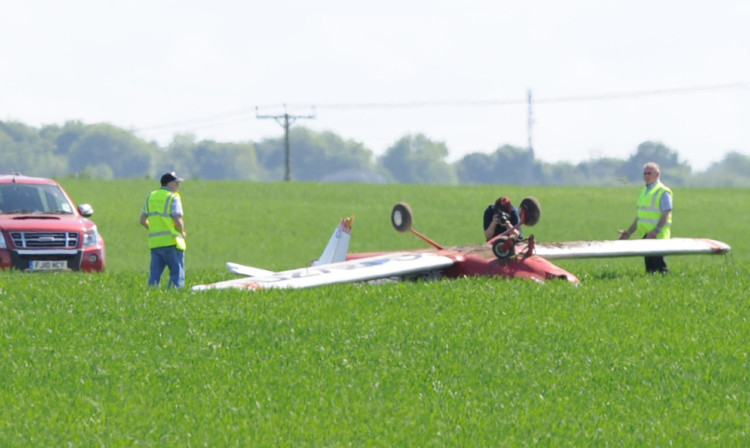An investigation into a Fife air crash could not establish the reason the plane’s engine failed in mid-flight.
The 48-year-old pilot of the light aircraft had an astonishing escape when his plane plunged into a field in June and flipped over on to its roof.
The pilot was lucky to suffer only slight injuries when he performed a forced landing in countryside just south of Glenrothes.
Although trapped following the impact, he managed to isolate the fuel supply a move which almost certainly saved his life before rescue crews arrived at the remote spot to free him.
The pilot had taken off from Fife Airport on the morning of June 8, fuelling the Tri Kis plane for a two-hour flight.
An Air Accidents Investigation Branch report found that pre-take off engine power checks had been normal, with the plane then taking off and climbing to 1,000ft without incident.
While awaiting clearance from Edinburgh Air Traffic Control, the pilot who has 68 hours’ flying experience decided to fly north then east to cross the Forth outwith controlled airspace.
He then carried out routine cockpit work, selecting a fuel mix and waiting for the engine to settle before checking that the temperatures and pressures were satisfactory.
When he attempted to climb and advance the throttle, however, the engine failed immediately and lost all power, although the plane’s propeller continued to “windmill”.
The pilot then started to look for an appropriate field in which to land but had to rule out the majority lying far below him as they had power cables running across them or were bordered by walls and houses.
He began the standard forced landing procedure and attempted to restart his engine, without success. He then put out a mayday call and selected a suitable field of crops for his landing.
On landing in the crops, his plane’s nose wheel dug into the ground and collapsed . This made the aircraft flip over so that it came to rest upside down.
The canopy of the aircraft, which was built in 1995, had collapsed as it flipped over and the pilot was trapped. The man had been wearing a four-point harness and so sustained only minor injuries.The pilot was able to make his aircraft safe and use his mobile phone to call the emergency services, who then helped him get out of the plane.
Meanwhile, members of the public had reported an aircraft flying at low levels over the village of Thornton and the suburb of Finglassie in the south of Glenrothes.
A full-scale emergency response was activated and crews rushed to the aid of the stricken pilot.
After being released by fire crews, the pilot was transported by air ambulance to Edinburgh Royal Infirmary for treatment and observation.
The AAIB’s investigation into the cause was inconclusive. It stated: “It has not been possible to establish the reason the engine failed in flight.”
